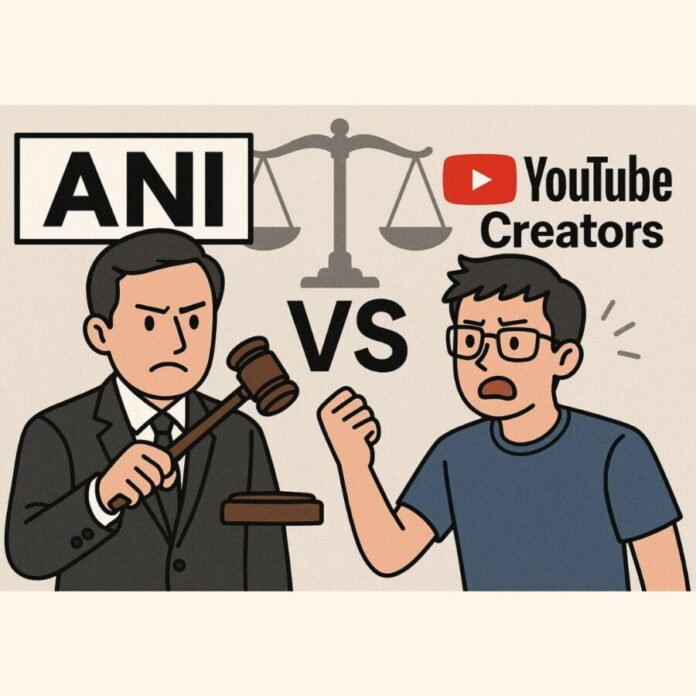You’ve probably seen the headlines: ANI v. YouTubers- copyright strikes, takedowns, and a heated debate about who owns what in the digital world.
To understand how this battle escalated from a few seconds of borrowed footage to a national conversation about fair use, press freedom, and the future of digital content, let’s break down the controversy, the arguments on both sides, and what it all means.
What is the controversy about?
ANI has issued a series of copyright strikes against YouTubers who used short clips, sometimes as brief as two to eleven seconds, of ANI’s news footage in their videos. These creators, including Mohak Mangal and Rajat Pawar, often used the clips for commentary, news analysis, or educational purposes. ANI, however, claims that any use of its footage without a paid license is a violation of its exclusive rights as a content producer.
ANI’s Take on the Matter
ANI has stated that it invests heavily in news gathering and content production, and as the exclusive copyright holder, it has the legal right to control and license the use of its material.
Enforcing these rights through available mechanisms is simply the lawful protection of its property and not an attempt to stifle creativity or extract unfair payments.

What’s at stake for the creators?
YouTube operates on a strict three-strike copyright policy: if a channel receives three copyright strikes, it can be terminated, erasing years of work and cutting off creators’ livelihoods overnight.
After receiving strikes, several creators reported being contacted by ANI’s representatives, who demanded large sums ranging from ₹15 lakh to as much as ₹48-50 lakh to withdraw the strikes and issue a license for continued use of ANI’s content. Many creators felt pressured to agree, fearing the loss of their channels.
Here’s what the creators are saying
At the heart of the controversy is the concept of “fair use”. Creators argue that their use of brief news clips for commentary, criticism, or news reporting is protected under Section 52 of the Copyright Act, 1957. They claim ANI’s aggressive enforcement is not just about protecting rights, but about extracting exorbitant payments and silencing independent voices.
This dispute is about much more than a few video clips. It exposes the gray areas in India’s copyright laws, the power imbalance between large content owners and independent creators, and the limitations of platform policies in protecting creative expression.
This isn’t just a trending topic. It’s a sign of the times.
Today, every law student and young lawyer needs to understand Intellectual Property Rights (IPR) and Technology Laws.
Why? Because the digital landscape is evolving fast, and those who understand the rules will shape the future.
Here’s your chance to get ahead:
Join Lawctopus Law School’s 2-Day Workshop on IPR & Technology Laws.
- Learn practical, job-ready skills from top legal experts
- Master trademark searches, copyright licensing, and data privacy
- Get exclusive bonuses and scholarships worth 12,500!
The ANI vs. YouTubers issue won’t be the last.
Will you be ready to advise, defend, and succeed in the next big case?
Disclaimer: This article was generated in part using artificial intelligence.


